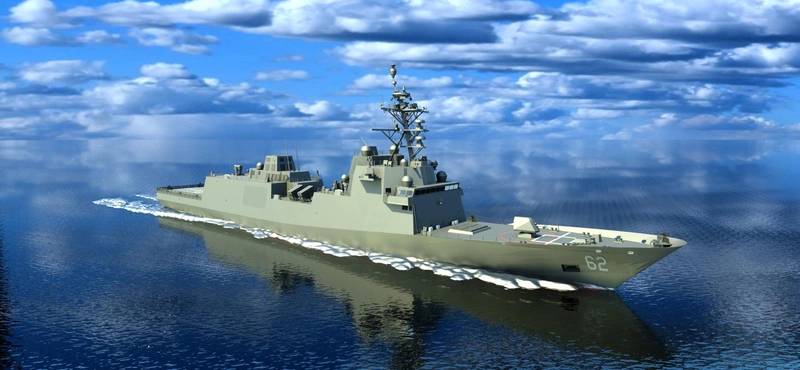In regards to the suggestion of additional Hobart class destroyers ,the present ones are at the capacity of growth and although receiving the Aegis upgrade will not likely have room for anything else ,if this order is considered is there an argument for a larger version for more growth
I think the aversion of risk, and the constraint of time, will limit that.
However, I do note that the design was significant refreshed for the US bid, and the winning bid, Fremm, was lengthened for additional growth margin in the new constellation class. 151m in the US design, verse 134 in Italian LPP, 144.6 in LOA, 142 in French LOA. They also went for the Italian width (19.7m) instead of the French (20m)
Introducing a new class of warship can be fraught with pain, and the first ship is always the hardest – almost always behind schedule and over budget.

www.marinelink.com
The U.S. frigate will be about 23 feet longer and about 500 tons heavier than their European cousins to provide margin for growth and to accommodate future weapons such as lasers, although the bridge and propulsion plant layout is the same.
Realistically if we got new evolved Hobart's, they would have a limited life and growth margin. Probably 20-25 years and then sold on. We are building them, because they are quick to build and bring in service, not because they are the best destroyer. It has limited placement of CIWS, limited growth and stability, and power and cooling and manpower. They are a ship for today, and evolution of the original OHP FFG frigate. They aren't alone in being limited. Burkes are limited, Burke based designs like Kongo, KDXIII etc are all growth limited. All of these would likely struggle to fit new larger VLS tubes, laser weapons, bigger and more powerful weapons and systems.
The future is the Type 26. Eventually an evolution of the T26 hunter will become an air defence destroyer, with less flex space, and more significant space for weapons and sensors etc. But we don't even have the first Hunter yet, let alone an evolved air defence version. We haven't proven CEAfar2 AFAIK integration either, so its not just the hull, the whole system needs to be built.
32VLS is enough for SM-2, SM-6 and ESSM. Heck you might be able to squeeze a few TLAM on board.
But if you are going to go BMD fleet/taskgroup destroyer in Asia, then its not enough. The closer you go, the greater the threat and the greater the capability needs to be. Arguably 48 is limiting, but it is still 50% more than 32. You are also more likely to go with SPY radar to ensure close integration (and allow us to prove integration with our Hunter frigates). Any hobarts in SEA or Asian waters, are their for more reasons than their loadout. They could command Korean/Japanese/US forces in an air defence role.
You also really have to look at the ADF as a whole. Australia has the largest fleet of E7's and strong C&C capability. We have the allied support to lead missions. Japan and SK have issues in those roles, as typically it was envisaged the US would always fill that. Ethically and politically, Australia can and has lead multinational missions, with and with lower levels of US support.
The US is absolutely crippled in terms of their E3 capability. While its there, it could be negatively affected in a high tempo environment.
B52's, B1's, b21, P8's based in Australia, Australia could ensure clear airspace for these to get close enough to make useful strike missions on the outer Chinese possessions and on any far flung Chinese fleets. Australia is also near key straits. In any future conflict we are likely to be critical around the key area of the conflict, controlling what comes in and out of it.

